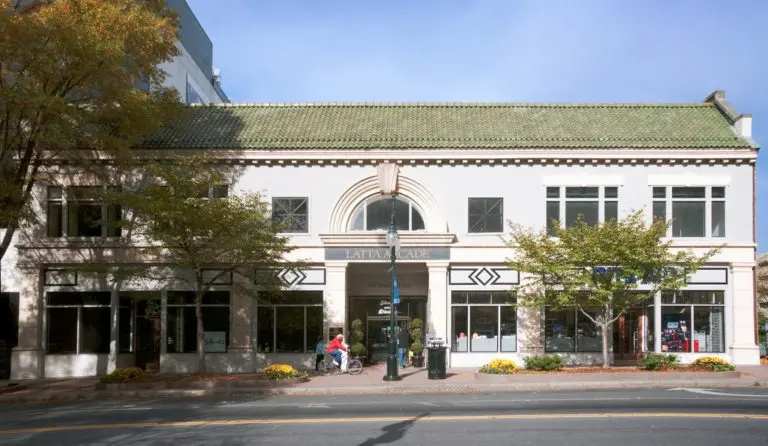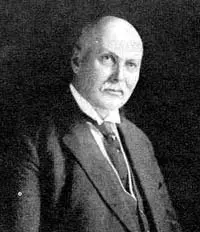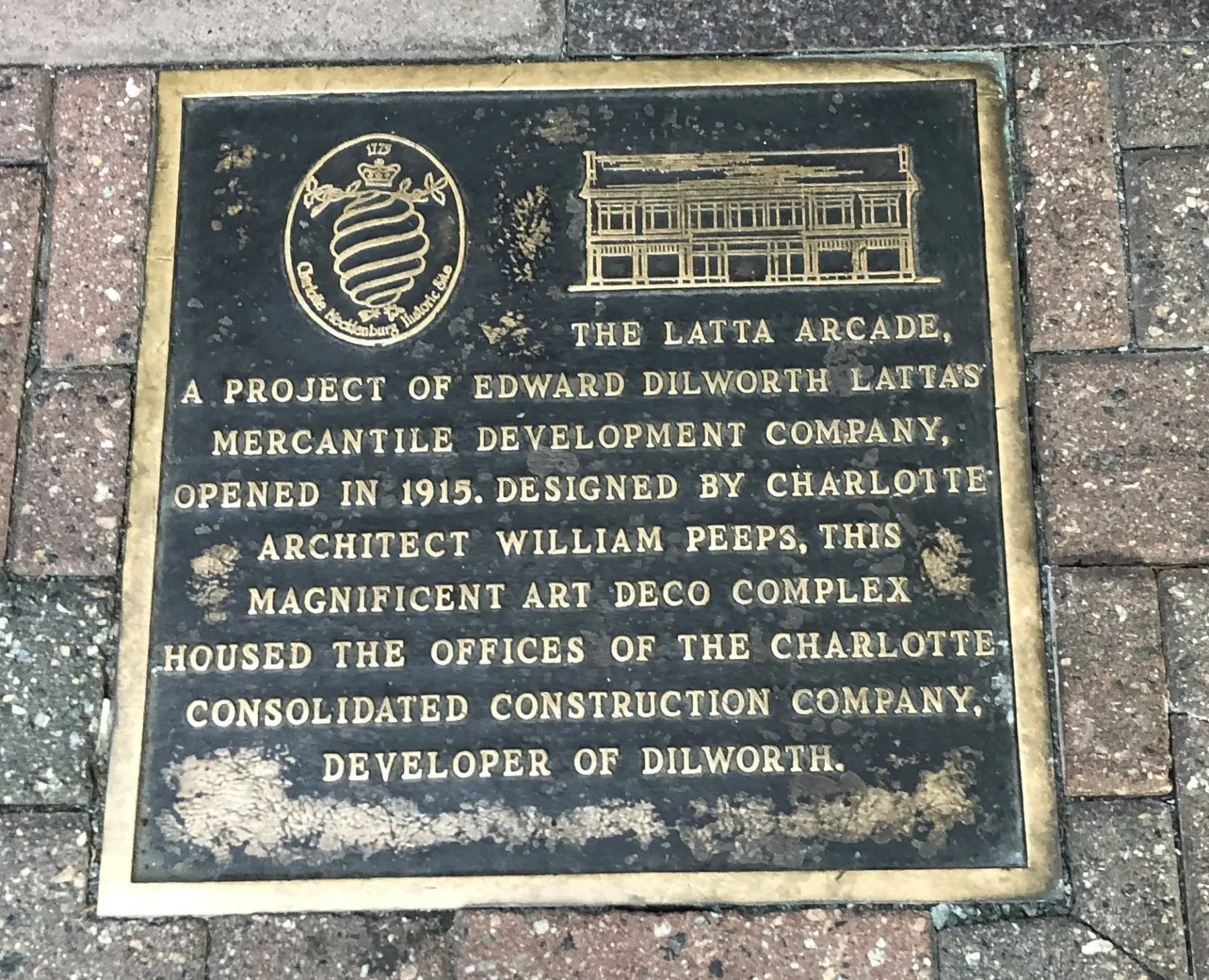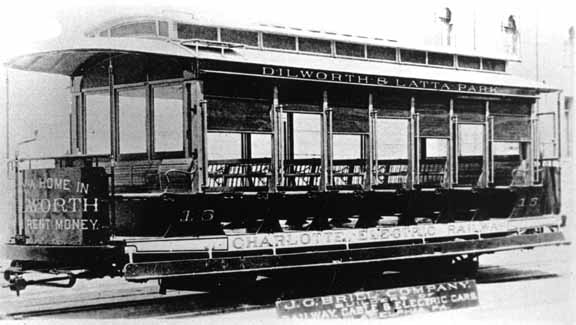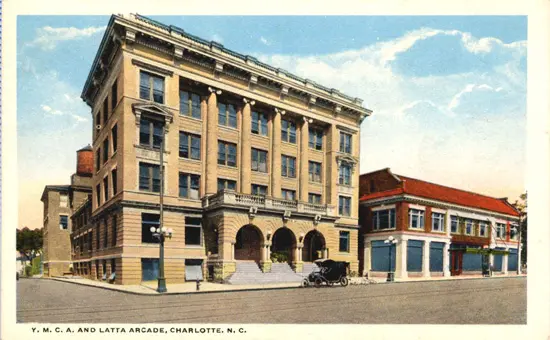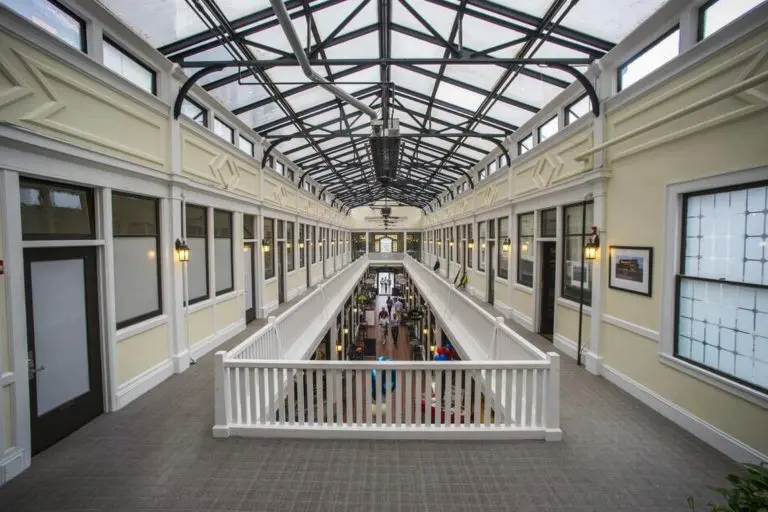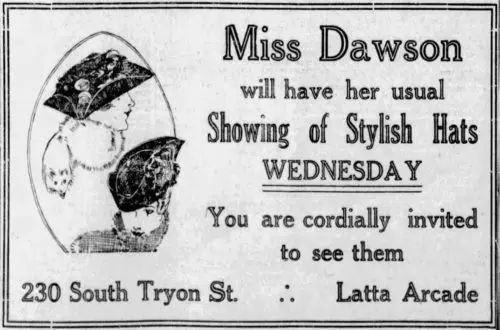Latta Arcade has been in Uptown Charlotte for nearly 110 years, at what is now 320 S. Tryon Street. Today, Uptown is a mix of residential and commercial spaces. But how did Uptown get that way? The area was predominantly residential when Edward Latta purchased almost $400,000 worth of real estate in 1910 along and around Tryon Street. He initiated a large-scale office building project, which helped convert Uptown and Charlotte into bustling hubs for business.
Edward Latta was a native of South Carolina who started as a salesman in a New York clothing store before becoming a traveling salesman. Latta moved to Charlotte in 1876. He began operating a clothing store in Charlotte that he would eventually sell to break into real estate. Real estate became his main form of business, and he grew into one of Charlotte’s first real estate moguls as the city grew.
Latta is an example of a New South entrepreneur who believed in the advancement of the South through industrialization. He was able to capitalize on that belief through the textile industry. In 1883, he founded the Charlotte Trouser Company, which made and distributed trousers throughout the South. Latta established the Charlotte Consolidated Construction Company (known as the Four Cs) in 1890 with Mayor F.B. McDowell and four other residents. Latta was the group’s leader, and one of their first moves was to purchase 422 acres in South Charlotte. This purchase would become Charlotte’s first suburban streetcar neighborhood: Dilworth.
Charlotte Railway Company was born from that project, as the Four Cs needed a way to manage their newly installed streetcar system. The Four Cs built many early utilities like power plants for electricity, a sewage system, waterworks, and a gasification plant. In this way, Latta added early utilities to his already impressive business portfolio, making him a vital player in Charlotte as it became a major industrial and business center in North Carolina. By the early 1900s, Latta and the Four Cs started to lose their utility monopoly as competition came from J.B. Duke and other developers and entrepreneurs. By 1910, Latta and the Four Cs were out of the utility business, and Dilworth was annexed as part of Charlotte. That same year, they purchased a large tract of land in Uptown.
The purchased land became the site of Latta Arcade, which opened in 1914. It was designed by English architect William H. Peeps and commissioned by Edward Dilworth Latta, with room for offices and shops. Latta Arcade was constructed on South Tryon Street. It was a grand space with marble stairs, railing, and fine woodwork. The Arcade has a sizeable skylight roof that allowed natural light for cotton grading, used by a cotton brokerage that was one of the early tenants of the space.
The Four Cs moved into an office there, and the building’s designer, William Peeps, also had an office in the Arcade. Businesses like Hospital Supply and Drug Co. and Hinson Brick and Supply Co. took advantage of the new store spaces. The building was so popular that people began approaching Latta about expanding the building. This was where people worked and shopped with local vendors like Miss Dawson, who sold hats.
The Arcade remained popular as both office and commercial space but began to fall to neglect in the 1950s and 1960s. Jack Heath purchased Latta Arcade after World War II, and renovations began in 1969. In 1982, the property was sold by Jack Heath’s estate to John Crosland Realty. Latta Arcade received significant renovations, which gave it the facade we are all familiar with today.
Latta Arcade is now owned by Northpond Partners, who will be remodeling and rebranding Latta Arcade as The Alley. The renovations have not yet been completed. Current tenants at Latta Arcade are a little excited and a little afraid of what the future holds for them and their businesses. Reagen Taylor-Banik, owner of the Men’s Room Barbershop, said, “I think the place needs some TLC, but at the same time I don’t want the history to be erased.” Taylor-Banik’s family has owned the barbershop for more than 50 years.


